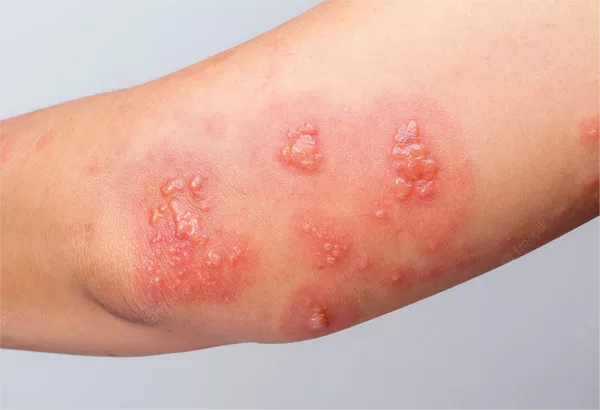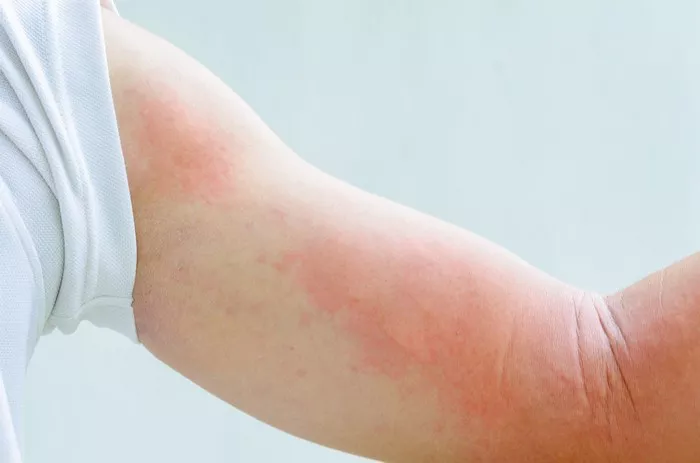Shingles, also known as herpes zoster, is a painful rash caused by the varicella-zoster virus. This virus is the same one that causes chickenpox. After someone has chickenpox, the virus remains dormant in the body and can reactivate later in life. Shingles is most common in older adults, particularly those over 50. The effects of shingles in elderly individuals can be severe and life-altering. This article explores the effects of shingles in elderly people, including symptoms, complications, and management strategies.
Understanding Shingles
Before discussing the effects of shingles, it is essential to understand what shingles is. The varicella-zoster virus remains inactive in nerve tissues after a person recovers from chickenpox. If this virus reactivates, it can cause shingles.
Symptoms of Shingles
Shingles symptoms often begin with:
Pain: This is usually the first sign of shingles. The pain can be intense and is often described as burning or throbbing.
Rash: A rash typically appears a few days after the onset of pain. The rash usually starts as red patches and develops into blisters.
Itching: The affected area may itch, causing discomfort.
Fatigue: Many individuals feel tired and unwell during an outbreak.
Fever: A mild fever may accompany other symptoms.
Headache: Some people experience headaches or sensitivity to light.
These symptoms can vary significantly from person to person, making diagnosis challenging.
SEE ALSO: Is Shingles Infection Contagious?
Effects of Shingles on the Elderly
Shingles can have several effects on elderly individuals, ranging from physical symptoms to psychological impacts. Here are the most significant effects:
1. Pain and Discomfort
Acute Pain
The pain associated with shingles can be severe. It may start as a burning sensation before the rash appears. This pain can last for weeks or even months, making daily activities challenging.
Postherpetic Neuralgia (PHN)
One of the most significant effects of shingles in older adults is the risk of developing postherpetic neuralgia (PHN). PHN is a condition where pain persists long after the rash has healed. It can be debilitating and is more common in older adults. The pain from PHN can last for months or even years.
2. Skin Complications
Secondary Infections
The shingles rash can lead to skin infections. Scratching the rash can introduce bacteria, leading to secondary infections that may require antibiotics to treat.
Scarring
In some cases, the rash can leave scars on the skin, especially if blisters become infected. Scarring can affect an elderly person’s self-esteem and body image.
3. Vision Problems
If shingles occurs around the eye, it can lead to complications such as:
Herpes Zoster Ophthalmicus: This condition can cause severe eye pain, redness, and sensitivity to light. It can also lead to more severe complications like vision loss.
Corneal Involvement: Inflammation of the cornea can occur, leading to corneal ulcers or scarring, which can impair vision.
4. Emotional and Psychological Effects
The experience of shingles can take a toll on an elderly person’s mental health:
Anxiety and Depression
The pain and discomfort caused by shingles can lead to feelings of anxiety and depression. Chronic pain, particularly from PHN, can make it difficult for elderly individuals to enjoy life or engage in social activities.
Social Isolation
Elderly individuals suffering from shingles may isolate themselves due to pain or fear of spreading the virus. This isolation can worsen feelings of loneliness and depression.
5. Impact on Daily Activities
The pain and discomfort from shingles can affect an elderly person’s ability to perform daily activities, including:
Personal Care: Simple tasks like bathing, dressing, and grooming can become painful.
Household Chores: The pain may prevent them from completing household tasks, leading to a decline in living conditions.
Social Activities: Pain can hinder participation in social events, impacting their quality of life.
6. Increased Risk of Other Health Issues
Shingles can increase the risk of developing other health problems in elderly individuals:
Compromised Immune System
Shingles can indicate a weakened immune system, making the elderly more susceptible to other infections.
Chronic Pain Conditions
The development of PHN can lead to chronic pain conditions that affect mobility and overall health.
Managing Shingles in the Elderly
Proper management is essential to alleviate the effects of shingles in older adults. Here are some strategies:
1. Medical Treatment
Antiviral Medications
Antiviral drugs such as acyclovir, valacyclovir, and famciclovir can help reduce the severity and duration of shingles if taken within 72 hours of the rash’s appearance.
Pain Relief Medications
Over-the-counter pain relievers like acetaminophen or ibuprofen can help manage pain. For severe pain, doctors may prescribe stronger medications, including opioids or nerve block injections.
Corticosteroids
In some cases, corticosteroids may be prescribed to reduce inflammation and pain.
2. Home Care
Cool Compresses
Applying cool compresses to the rash can provide relief from itching and pain.
Calamine Lotion
Using calamine lotion can help soothe the rash and reduce itching.
Loose Clothing
Wearing loose, breathable clothing can prevent irritation of the rash.
3. Psychological Support
Counseling and Therapy
Older adults may benefit from counseling or therapy to help cope with the emotional and psychological effects of shingles.
Support Groups
Joining a support group can help elderly individuals connect with others who have experienced similar challenges, reducing feelings of isolation.
4. Vaccination
Shingles Vaccine
The shingles vaccine, known as Shingrix, is recommended for adults over 50. This vaccine can significantly reduce the risk of developing shingles and its associated complications, including PHN. Even if someone has had shingles, vaccination can help prevent future outbreaks.
5. Healthy Lifestyle
Encouraging a healthy lifestyle can support immune function and overall health. Important components include:
Balanced Diet: Eating a diet rich in fruits, vegetables, whole grains, and lean proteins.
Regular Exercise: Engaging in moderate physical activity as tolerated can improve physical and mental health.
Adequate Sleep: Ensuring sufficient rest is essential for recovery and overall health.
Conclusion
The effects of shingles in elderly individuals can be profound, affecting physical health, emotional well-being, and quality of life. Understanding the symptoms, complications, and management strategies can help mitigate these effects. Prompt medical treatment, effective pain management, psychological support, and vaccination play crucial roles in addressing shingles. With the right approach, elderly individuals can navigate the challenges posed by shingles and maintain a better quality of life.
Related topics:


























